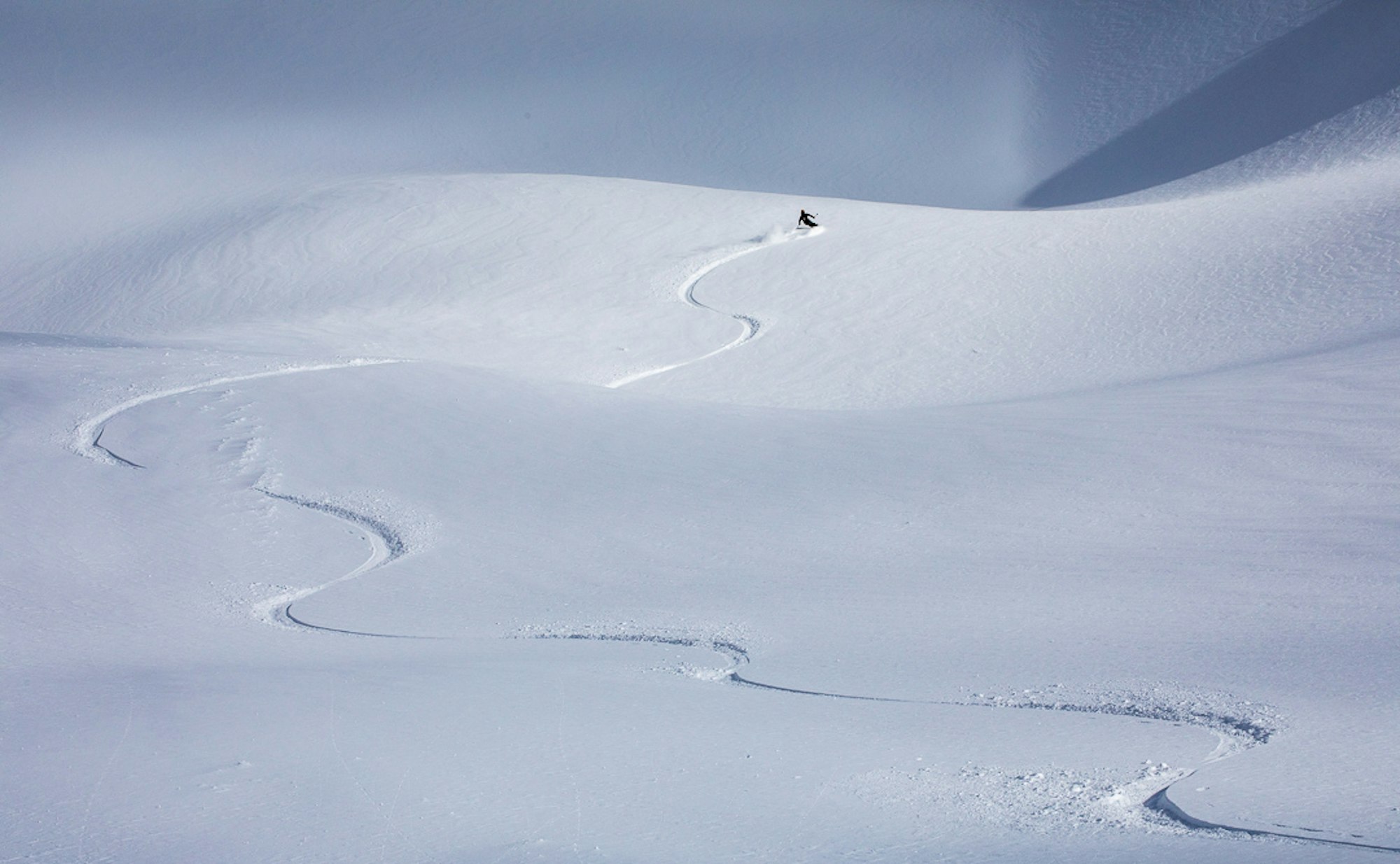Featured Image: Ryan Creary | Skier: Stephanie Riendeau | Location: Revelstoke, BC
Skiing is full of rivalries: Alta versus Snowbird, poles versus no poles, and maybe most notably, Harkin Banks versus Rudi Garmisch. Conflicts and opposing ideas have helped shape our sport, but somehow we still enjoy a relatively unified culture made up of two simple parts: the left turn and the right. Like a pendulum, one always leads into the other, and any successful descent—be it the halfpipe at the X Games, the Hahnenkamm in Kitzbühel, or Meteorite Mountain in Alaska—is made up of both.
Our modern sport is a relatively harmonious exchange between these two opposing forces, but it hasn’t always been that way. To understand where we are today, we have to go back in time and discuss the earliest ski philosophers. Just as modern political discourse sprung from seminal thinkers like John Locke and Thomas Hobbes, skiing had its own sages and stoics way back in the day. For us, it all began with Edvard Tressletrap and Timothy Eggsbloke, rival ski theorists at the dawn of snow sliding.
In those early days, skiing wasn’t recreational, it was simply a means to get down a hill. It wasn’t made up of turns so much as it was long traverses. But, as tastes evolved, the vanguard started to link those traverses purely for amusement, and it threw the conservative element of the sport into a frenzied outrage. The establishment believed skiing should only happen in a linear fashion, in one direction only, and shouldn’t be fun—the establishment was largely made up of Catholics. Endless debate broke out in the salons and chalets with the aim of codifying the correct way to ski for generations to come. Tressletrap and Eggsbloke emerged as the two most prominent voices in this fight. Eggsbloke believed that the left turn was superior, while Tessletrap was a fervent zealot for the right.
Eggsbloke argued that “man’s” innate nature leaned to the left, as was evident by his own left testicle hanging lower than his right. Tessletrap, a master of rhetoric, answered by stating that God had clearly intended for skiers to go right, by virtue of giving that direction that name: “right!” Skiers were divided: both ideas were extremely compelling, but they proposed two very different futures.
So, while conservatives feuded amongst themselves, it left room for progressives to emerge— those who wanted to link turns. It took a woman named Laetitia María López to point out the obvious. She discovered that if you flexed a ski it curved, and would arc in a parabola. There was no such thing as a straight line in skiing, skiers had been subtly turning with every traverse for as long as they’d been sliding.
“It’s just a circle,” María López vociferously announced, barging into the annual Norwegian sweater symposium—the event from which skiing’s powerful elite had been quietly shaping the sport for years. “You’re all talking about the same stupid thing, if you go the whole way around, left or right, you end up in the same damn place!”
The revelation was revolutionary in the most figurative sense. Taking both turns to their extremes would deliver the same disastrous result—going nowhere. This meant both turns, the left and the right, had to work together in concert to get anywhere.
As this simple notion became irrefutable, all skiers came together. From the Stem Christie to the snowplow, every ski technique since has flowed from the same founding principle: It takes both lefts and rights to get down the mountain. To insist purely on one or the other is to launch back to a much darker time in our history, when it was dominated by Puritans and there was no such thing as sidecut.

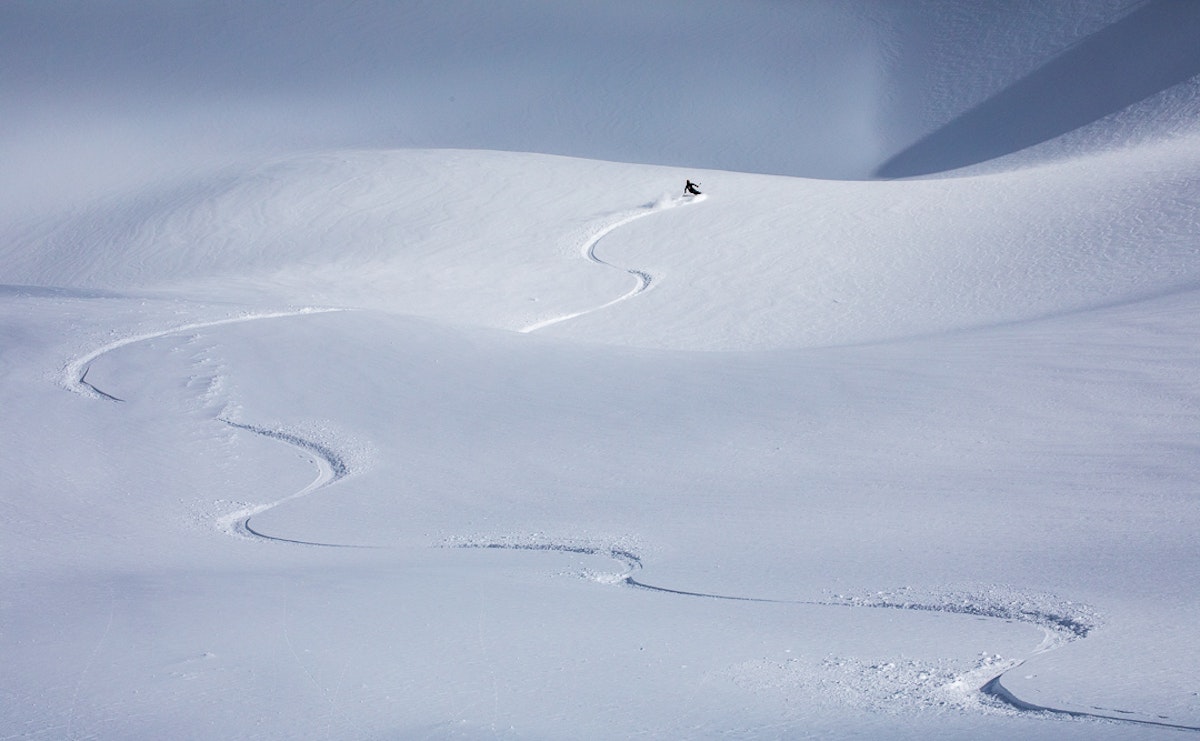

![[GIVEAWAY] Win a 4-Night Karma Campervan Rental and go Ski the Powder Highway](https://www.datocms-assets.com/163516/1767816935-copy-of-dji_0608-1.jpg?w=200&h=200&fit=crop)

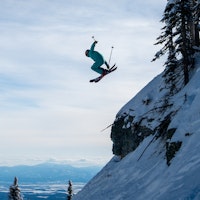
![[GIVEAWAY] Win a Legendary Ski Trip with Icelantic's Road to the Rocks](https://www.datocms-assets.com/163516/1765233064-r2r26_freeskier_leaderboard1.jpg?auto=format&w=400&h=300&fit=crop&crop=faces,entropy)
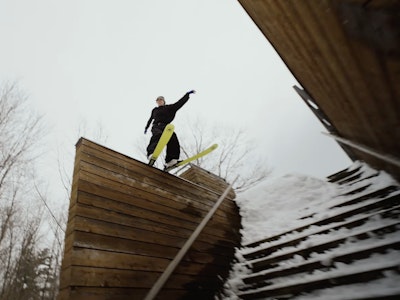
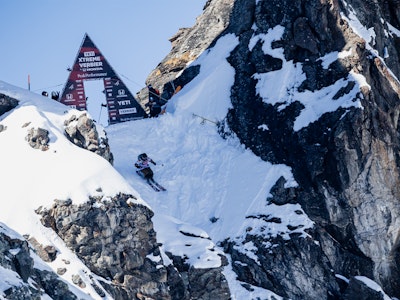
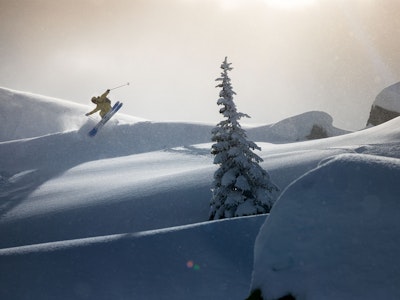


![[GIVEAWAY] Win a 4-Night Karma Campervan Rental and go Ski the Powder Highway](https://www.datocms-assets.com/163516/1767816935-copy-of-dji_0608-1.jpg?auto=format&w=400&h=300&fit=crop&crop=faces,entropy)

